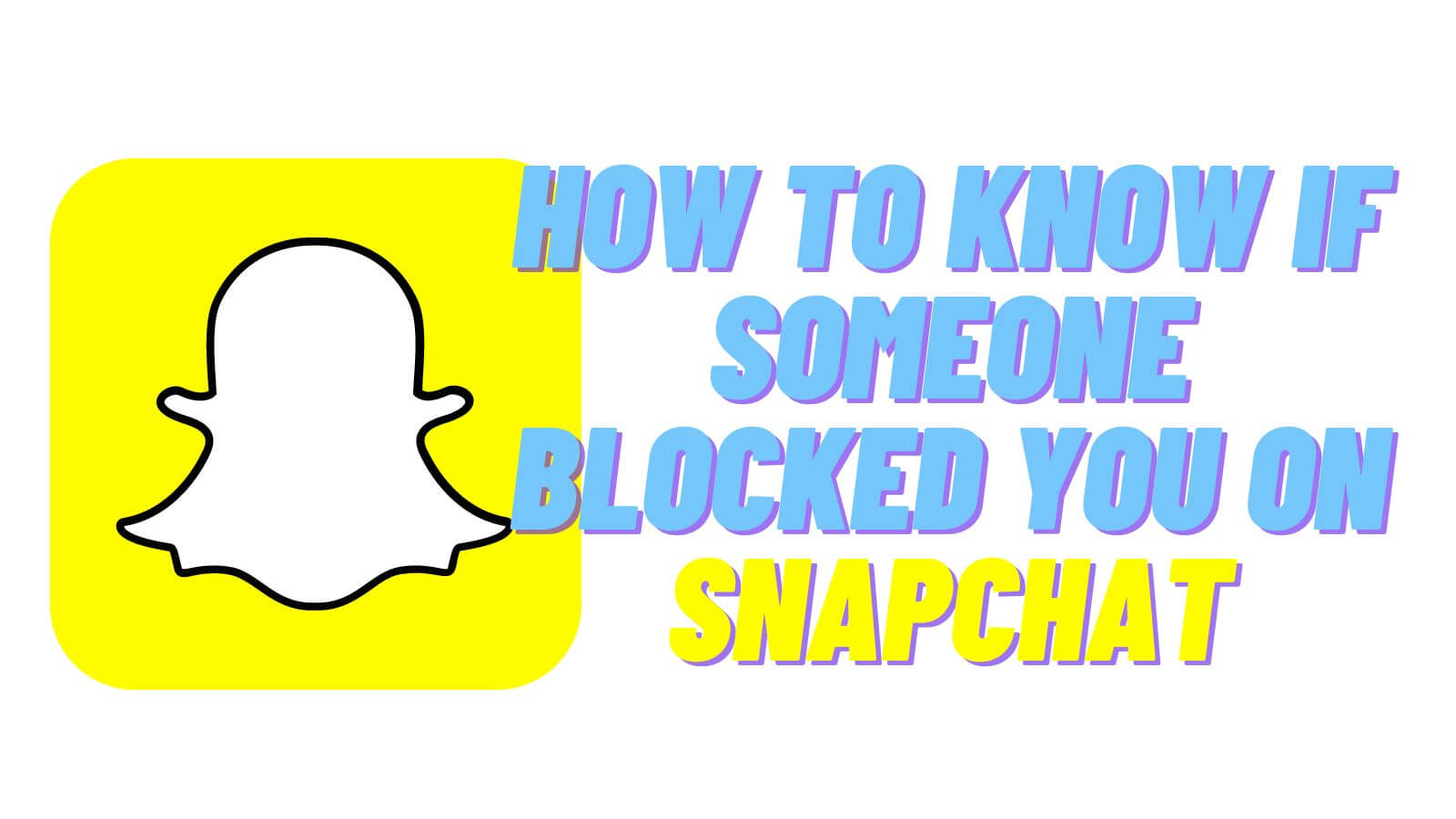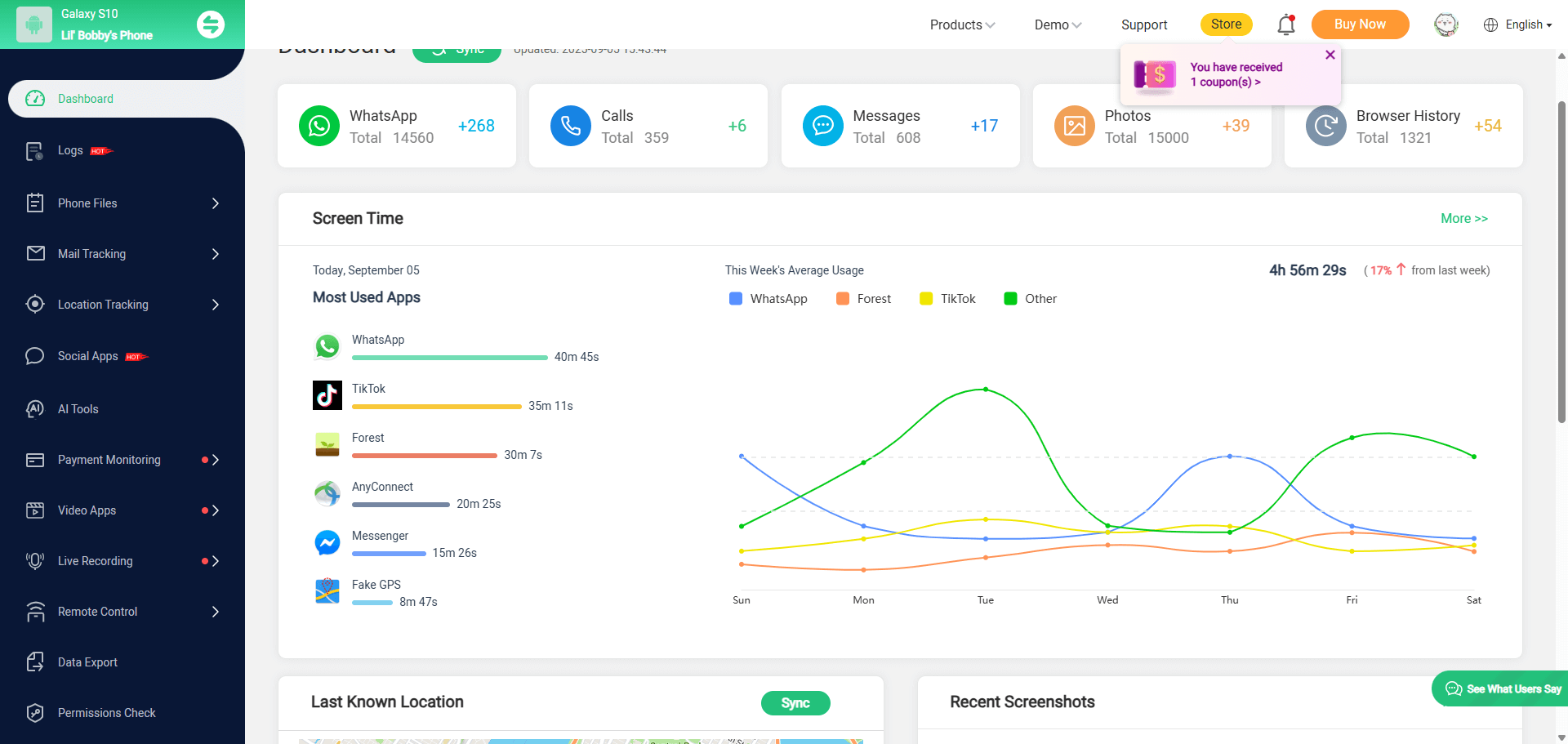FamiGuard Support: Monitor Devices with Others' Permission.
Wondering why you suddenly can’t see someone on Snapchat? It’s common to feel confused or anxious when a friend disappears from your list. This guide will explain practical ways to determine if someone blocked you, the differences between being blocked or removed, reasons why people restrict contacts, and tools like Famiguard to manage Snapchat usage safely.

Table of Contents
Part 1: Recognizing the Signs That You May Be Blocked
Part 2: Blocked vs. Removed: Understanding the Difference
Part 3: Why People Block, Remove, or Delete Snapchat Accounts
Part 4: Using Famiguard to Monitor and Control Snapchat Usage
Part 5: FAQ about How to Know if Someone Blocked You on Snapchat
Recognizing the Signs That You May Be Blocked
Snapchat doesn’t directly notify users when they are blocked. However, there are several subtle indicators that can help you figure it out:
1. Search Their Username or Full Name
Try typing the person’s username or full name in Snapchat’s search bar. If their profile no longer appears, it could mean you have been blocked or they deactivated their account. Cross-check with other sources to be sure.
Step 1: Open Snapchat and tap the search bar at the top of the screen.
Step 2: Enter the person’s username or full name exactly as it appears.
Step 3: Look at the search results. If their profile does not appear while other friends do, it could mean you’ve been blocked or the account is deactivated.
Step 4: Cross-check with another friend’s account or a secondary account to confirm. If the person appears there but not for you, the block is confirmed.
2. Look at Old Conversations
Check your previous chats with the person. If old messages show “Pending” or snaps don’t deliver, this may indicate a block. Note that if the account is deleted, similar signs may appear, so look for other clues.
Step 1: Open your Snapchat chat history with the person in question.
Step 2: Check the status of your last sent messages. If the status shows “Pending” or snaps never deliver, it may indicate a block.
Step 3: Try sending a snap or message. If the message fails repeatedly while other friends receive yours normally, this reinforces the likelihood of a block.
Step 4: Keep in mind that if the account has been deleted, similar signs may appear, so use this step along with others to be sure.
3. Use a Friend’s or Secondary Account
Log in from a friend’s account or create a secondary account to search for the user. If they appear there but not on your main account, it’s likely you have been blocked.
Step 1: Log out of your main Snapchat account.
Step 2: Ask a trusted friend to search for the person’s username or log in from another device or secondary account you own.
Step 3: If the person’s profile is visible to the friend or on the secondary account but not on your main account, this confirms that you’ve been blocked.
Step 4: Avoid jumping to conclusions if multiple people cannot see the account; it might have been deactivated or deleted.
4. Review Your Friends List
Sometimes a blocked contact disappears from your friends list entirely. If you notice that other friends remain while a specific person is missing, it’s a strong sign of being blocked.
Step 1: Open your Snapchat profile and navigate to “My Friends” list.
Step 2: Scroll through your friends to see if the person appears.
Step 3: Compare with other friends. If everyone else is visible and only this specific contact is missing, it could indicate a block.
Step 4: Optionally, try adding them again using their username. If you cannot send a friend request, this is another strong indication of being blocked.
Blocked vs. Removed: Understanding the Difference
It’s easy to confuse being blocked with being removed. When someone removes you from their friends list, you can still see their profile and snaps if their privacy allows. Being blocked, however, is more restrictive: you can’t view their stories, send snaps, or find them in search results. Understanding this distinction helps you interpret what is happening more accurately.
Why People Block, Remove, or Delete Snapchat Accounts
People may block, remove, or even delete accounts for various reasons:
- Protecting their privacy or avoiding unwanted messages.
- Ending communication with specific friends due to personal conflicts.
- Reducing social media usage or taking a break from Snapchat.
- Preventing distractions during work, study, or personal life.
Knowing these reasons can help you stay calm and avoid overthinking if someone blocks or removes you.
Using Famiguard to Monitor and Control Snapchat Usage
For parents concerned about children’s Snapchat activity, apps like Famiguard provide effective tools to monitor and control usage:
- Block or limit access to Snapchat entirely.
- Set daily screen time limits and schedule app availability.
- Track app usage to ensure safe and balanced social media habits.
Using Famiguard not only protects children from potential risks but also helps them develop healthy online behavior.

FAQ about How to Know if Someone Blocked You on Snapchat
Q1: Can I know for sure if someone blocked me on Snapchat?
There’s no official notification, but by checking searches, old chats, friends lists, and using another account, you can usually determine if you’ve been blocked. Combining multiple methods gives the clearest picture.
Q2: What’s the difference between being blocked and removed?
Being removed means the person deleted you from their friends list but you may still view their public content. Being blocked restricts all contact, including messages and story views, making you invisible to them on Snapchat.
Q3: Why would someone block me instead of just removing me?
Blocking is a stronger measure often used to prevent any form of interaction. It may be due to privacy concerns, personal conflicts, or to avoid repeated messages or snaps from you.
Q4: How can parents control Snapchat usage for kids?
Parents can use Famiguard or similar parental control apps to block or limit Snapchat, schedule usage times, and monitor screen activity. This ensures children use social media safely and responsibly.
Conclusion
Understanding how to know if someone blocked you on Snapchat can reduce confusion and stress. Check profile searches, chats, friends lists, or use a secondary account to confirm. Remember the difference between blocked and removed, consider reasons why people block, and for parents, tools like Famiguard help manage children’s Snapchat usage safely. Following these steps ensures clarity and helps maintain healthy digital interactions.
By Tata Davis
An excellent content writer who is professional in software and app technology and skilled in blogging on internet for more than 5 years.







































